Click on any image to see a larger version.
May 10, 2015
On Friday I visited the Lake Apopka Restoration Area’s newly opened 11-mile North Shore wildlife drive for the first time. To say that I was impressed with the wildlife viewing opportunities there would be a massive understatement. This area will surely become one of my regular destinations for natural historizing and photography in coming years.
When I was a graduate student at the University of Florida in the 80’s, I remember hearing of the incredible birding opportunities in late summer at the Zellwood muck farms. I never made the drive to check the area out. I should have. My first visit to the north shore area of Lake Apopka came in the fall of 1998, when I was checking out potential field trip sites for the Ornithology class I was teaching that fall at Stetson. From DeLand, it’s less than an hour’s drive, mostly through bucolic mixed agricultural habitat in Seminole County. I distinctly remember driving down one of the shell rock roads, surrounded on both sides by browned, fallow vegetation with little evidence of the legendary concentrations of migratory birds I had come to see. A couple of times I saw small groups of aquatic birds, including some waders and terns, flying past me towards the west. Encouraging. Then I topped a small rise that allowed an overview of one of the flooded fields that acted as the great bird attractors, and I nearly ran off the road at the stunning sight of hundreds of acres of shallow water fields teeming with aquatic birds of every stripe. Tons of waders, including hundreds of great blue herons, white pelicans, other egrets and herons, wood storks, and a panoply of smaller birds including shorebirds, terns, anhingas… I was ecstatic. I made several visits to the area in the next couple of weeks, and then the St. Johns Water Management District closed the whole area to public access. Dead birds started showing up by the hundreds.
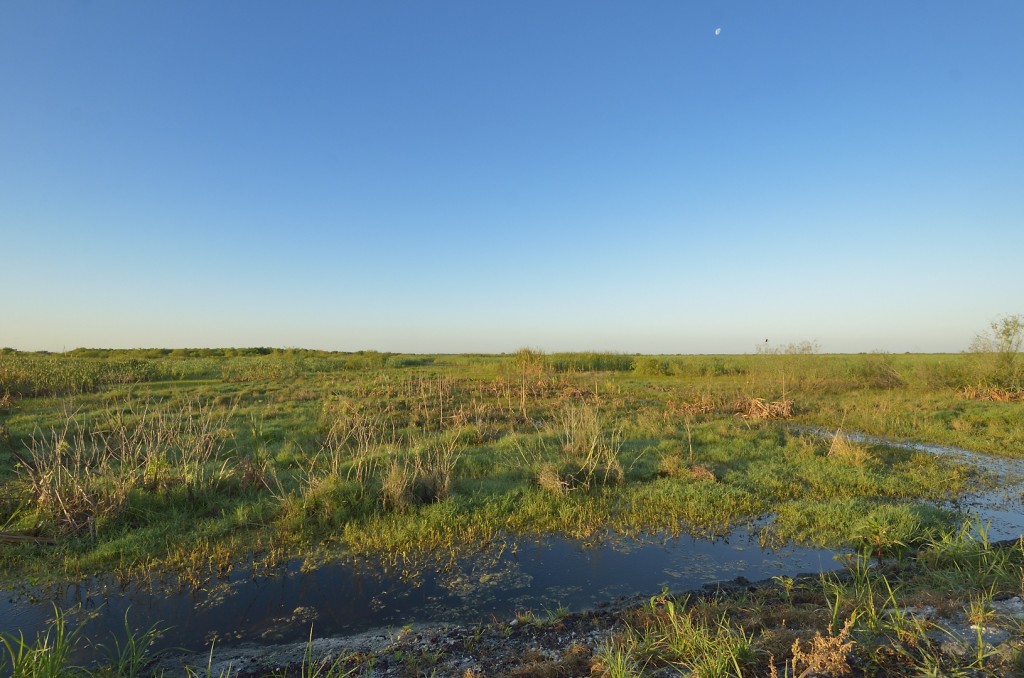
Most of the habitat in the Lake Apopka Restoration Area is highly disturbed, consisting of former agricultural fields that are converting back to a variety of marsh habitats.
The vast wetlands fringing Lake Apopka, a 30,000-acre lake that is Florida’s fourth largest, had been heavily farmed since the 40’s, and the “muck farming” operations devastated the water quality in Lake Apopka and its surrounding highly modified wetlands. These farming operations left behind miles of levees, roads, canals and pumping systems to move lake water onto and off of the agricultural fields that had been formed by draining the natural wetlands. After spending nearly $100 million between 1996 and 1999 to buy out about 13,000 acres of former farmland, the St Johns River Water Management District began major restoration efforts in the mid-90’s. Restoration plans for the area featured a 760-acre flow-way designed to circulate highly eutrophic lake water through restored wetlands in order to filter out excess nutrients and pollutants, and also included the flooding of large tracts of farmland in the fall of 1998 in the Zellwood farming district. The Zellwood muck farms were legendary for years among Florida birders for their late summer and fall concentrations of shorebirds. Large numbers of sandpipers, plovers, gulls, terns and other aquatic birds would congregate in the temporarily flooded fields in late summer to feed and prepare for the rest of their migration. During the farming era, however, these fields were drained and planted with winter crops by November, and whatever birds remained in the area moved on.
In fall of 1998, the management plans for the area called for prolonged flooding of some of these fields, and the response by the avifauna was incredible. Between August 1998 and February 1999, local bird groups and district scientists documented over 111,000 individual birds using an 8000-acre area. Flocks of tens of thousands of teal, diving ducks, and American coots were present at times. Beginning in November, however, dead birds began to appear on the site. White Pelicans were the hardest hit; at one time, the white pelican flock at Zellwood numbered over 4000, believed to be nearly half of Florida’s wintering population of these huge, lumbering birds. By February of 1999, nearly 500 bird deaths had been recorded on site, and another 500 or so dead birds, mostly white pelicans, were found throughout Florida, and were suspected to have originated from the Zellwood area. Also affected were smaller numbers of wood storks, an endangered species, along with great egrets and ring-billed gulls. I remember watching a juvenile wood stork at Lake Woodruff National Wildlife Refuge in DeLeon Springs for several days in a row during January 1999, some 40 miles away from Lake Apopka. That bird moved fairly slowly, was quite tame, and stayed in the same restricted area for the entire time I observed it. Nearly a week later, I found the carcass of a wood stork near where I had seen that curiously behaving bird. I still have the skull on a shelf in my office.In retrospect, I suspect that it was also a Zellwood bird.
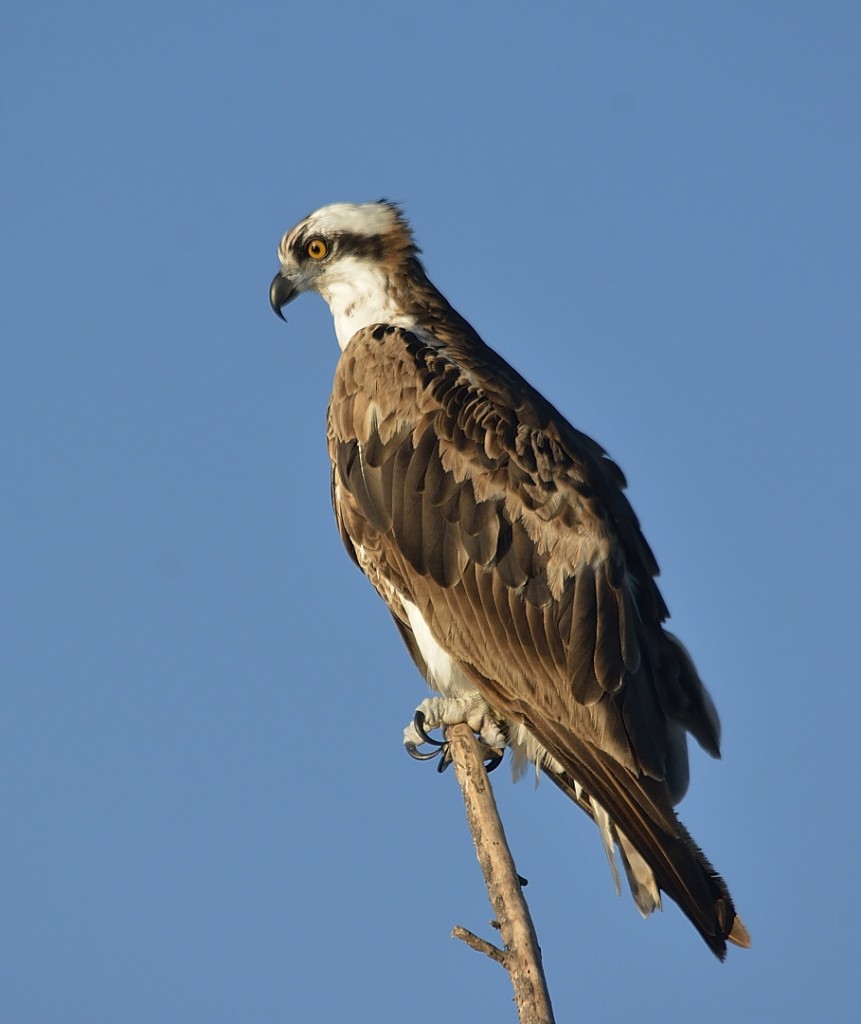
Ospreys were abundant on this lovely May morning, especially in the parts of the drive closer to Lake Apopka.
The catastrophic bird mortality took everyone involved with the project by surprise. Although extensive sampling of the acquired lands was done before flooding to determine if there were any contamination hazards, the assays failed to turn up anything that looked like a threat to the health of the birds. In February 1999, the flooded fields were drained to encourage the birds to move elsewhere, and extensive soil and water sampling was performed, along with necropsies of many of the dead birds to attempt to determine the source of mortality. A period of uncertainty and debate about the source of the bird kill ensued, during which a variety of hypotheses, including pesticide contamination and epidemic outbreaks of avian cholera and Newcastle’s disease, were proffered. Eventually, acute toxicity due to exposure to multiple pesticides (toxaphene, Dieldrin, DDT) was identified as the most likely cause, and the restoration/remediation plans for the Apopka North Shore Restoration project were modified accordingly. Apparently, a concentrated “hot spot” of discarded pesticides on a restricted area of the north shore property was responsible for all of the problems. Amazingly, the pesticides involved had been banned and out of use for 10-30 years.
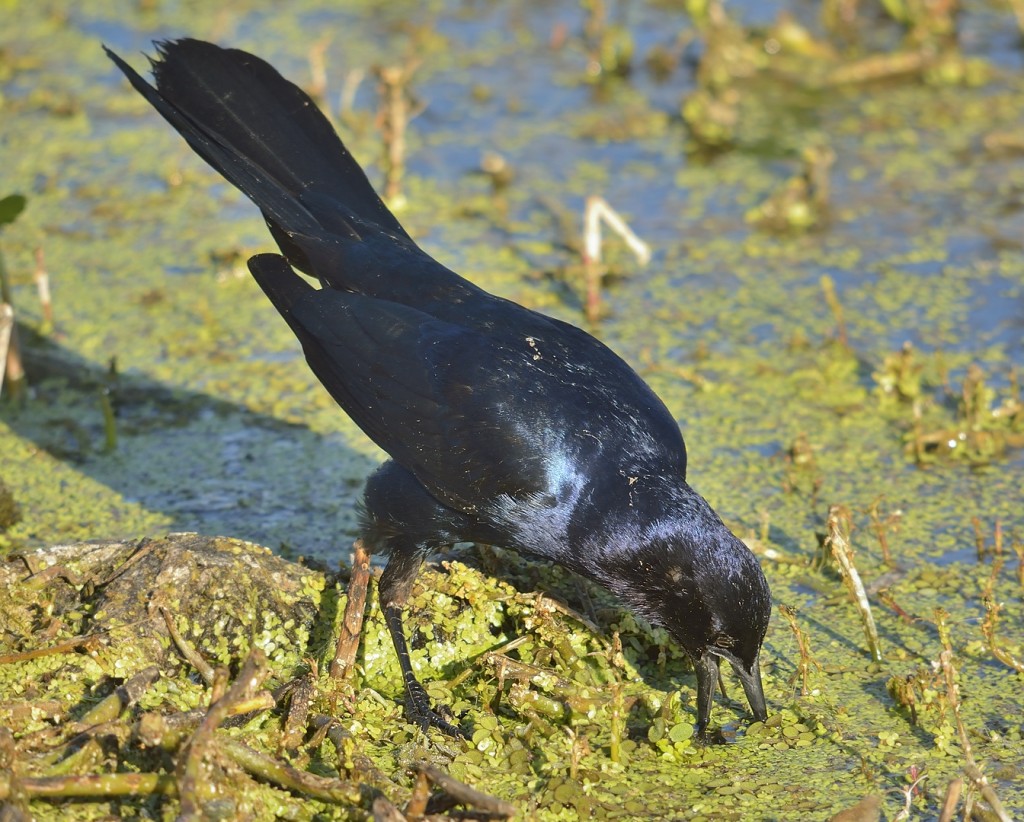
This boat-tailed grackle was engaged in “gaping behavior”. They insert their beak into some substrate and open it to push aside obstructions. Many icterids use this behavior to find soil invertebrates, but this male was using it to open a little hole in the duckweed through which he could peer down into the water.
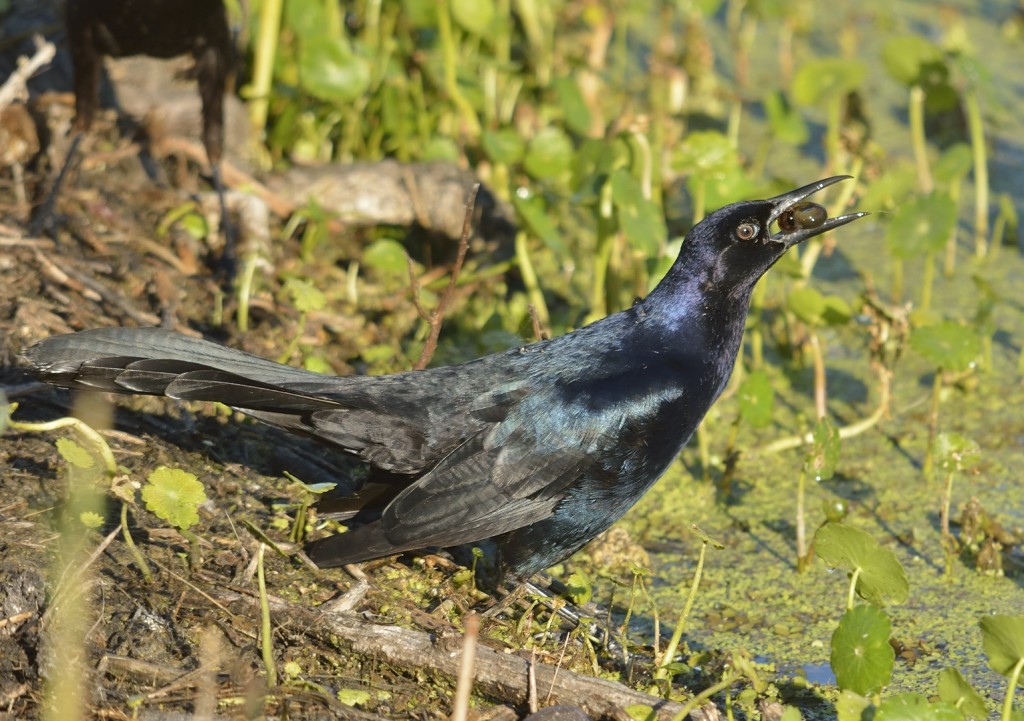
The target? Snails. He deftly pulled them out of the shell and enjoyed fine dining even without the garlic butter.
For the next decade, as mitigation and clean-up efforts proceeded, most of the North Shore area of Lake Apopka was mostly off-limits to the public. One of the mitigation techniques used to deal with the elevated concentrations of organochlorine pesticides and excessive nutrients that had accumulated from decades of farming was a method called soil inversion. Modified agricultural equipment was used to plow down to a meter or more into the heavily contaminated top layer of soil and flip it over, replacing it with deeper layers of clean soil.
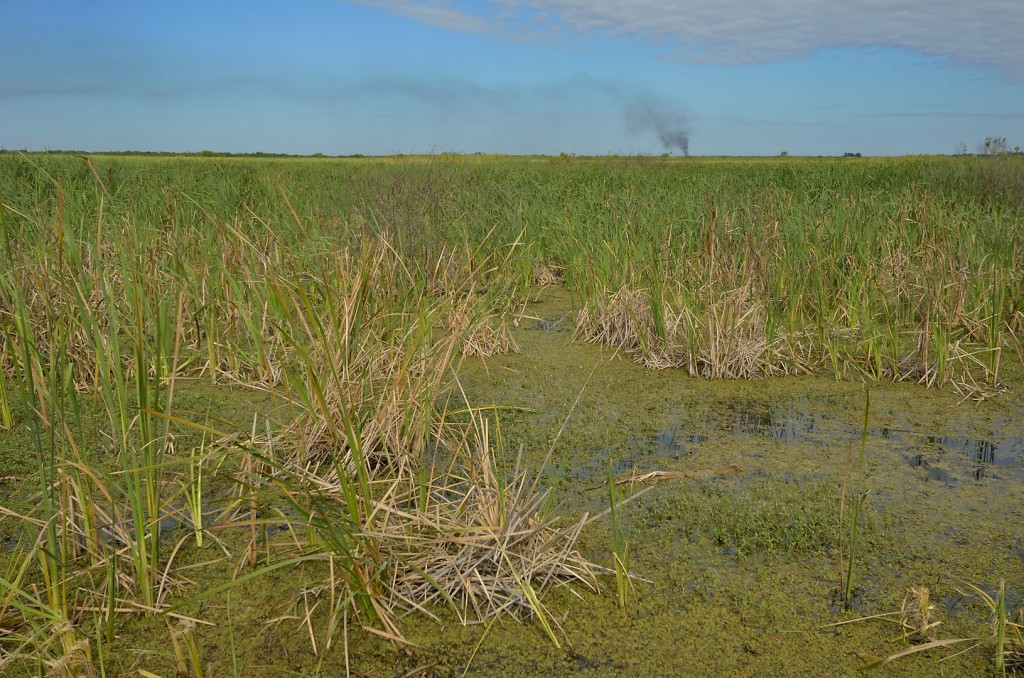
The vegetational composition of the wetland habitats is highly variable. Many areas are dominated by cattails, usually an indicator of high nutrient levels (eutrophication).
Restricted access to the public ended in 2014, when the SJRWMD began opening some of these north shore properties, easily accessible due to the extensive networks of diked roads, to the public for hiking and biking. The North Shore Wildlife Drive opened on Friday, May 1. It is open from sunrise to a half-hour before sunset on Fridays, Saturdays and Sundays year-round.
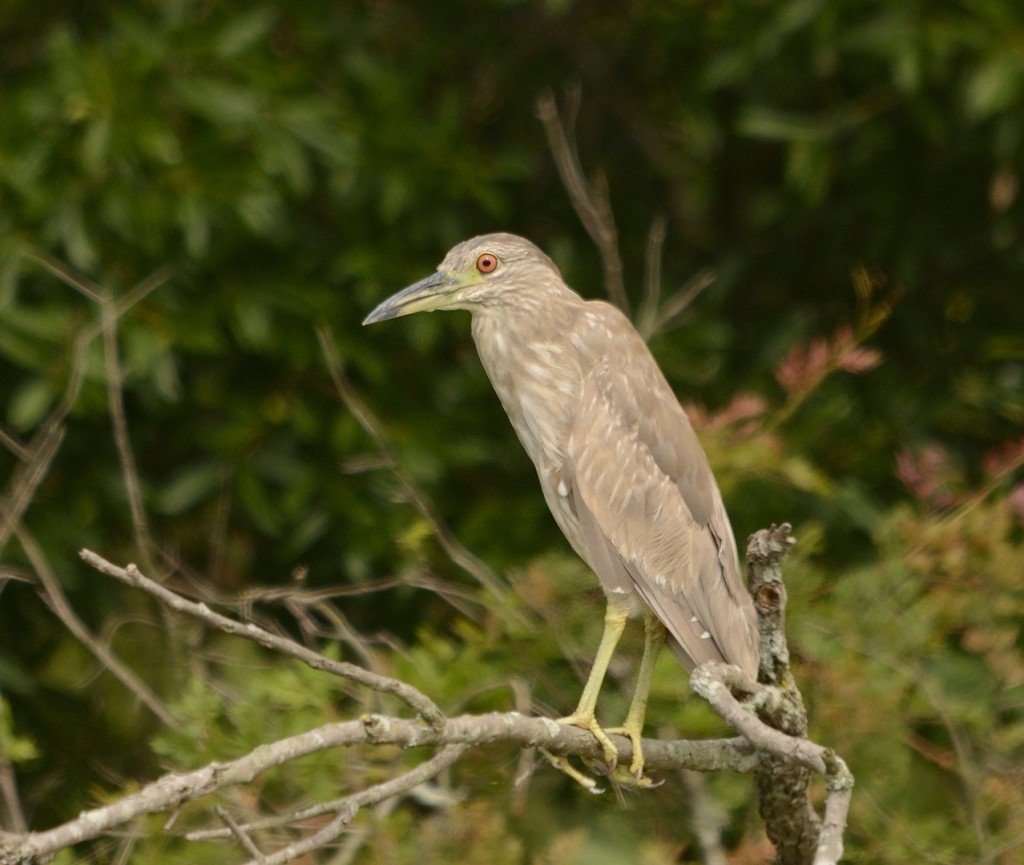
Waders of all types were common, including great and snowy egrets, great blue, little blue, tricolored and green herons, and a few black-crowned night herons. This bird is an immature.
I wasn’t expecting huge numbers of birds or great diversity on this visit; wintering birds have largely left the state, and the passage of transient migrants is rapidly winding down. It’s that time of year for Florida birders when diversity is plunging to its summer nadir. Still, I was hoping there might be a few bobolinks around, and perhaps some other lingering migrants. I wasn’t disappointed. Almost as soon as I entered the drive, I heard, then saw a small flock of bobolinks in the marshes north of the drive. Too distant for photography, but it didn’t matter. Much. I love seeing and hearing bobolinks, anytime, anywhere, at any distance. The first stretch of the drive heads due west, so the sun was directly at my back and the habitat on either side was strongly side-lit. Not the best conditions for bird photography, but still I was impressed by the dozens of herons, egrets, ibis, limpkins, and other aquatic species foraging in the canal paralleling the drive. And the marshes were full of singing icterids on territory – red-winged blackbirds and boat-tailed grackles. So I was a little bummed out by the lack of photo opportunities in the first couple of miles of the drive, but there was so much bird life around that it didn’t feel right to be disappointed. In addition to the waders in the canals, several black-bellied whistling ducks and a couple of mottled ducks did flyovers, along with lots of waders. Barn swallows were coursing low over the marshes throughout the morning.
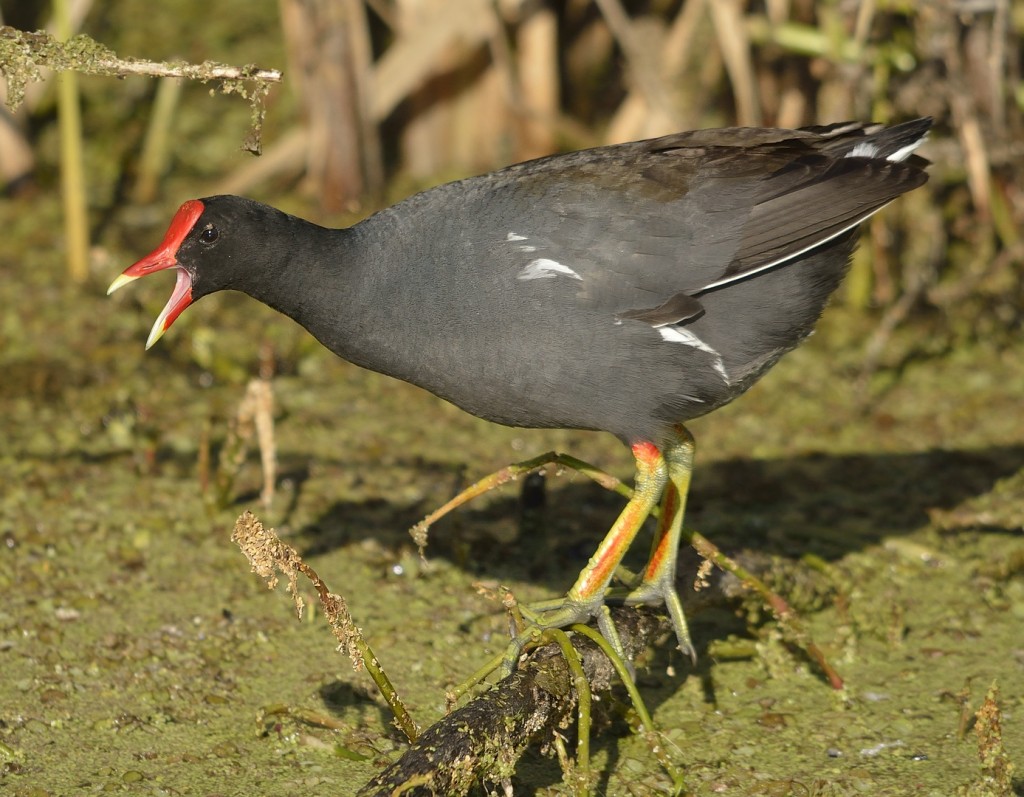
Common gallinules were abundant, including numerous pairs tending to their broods of newly hatched fuzzballs.
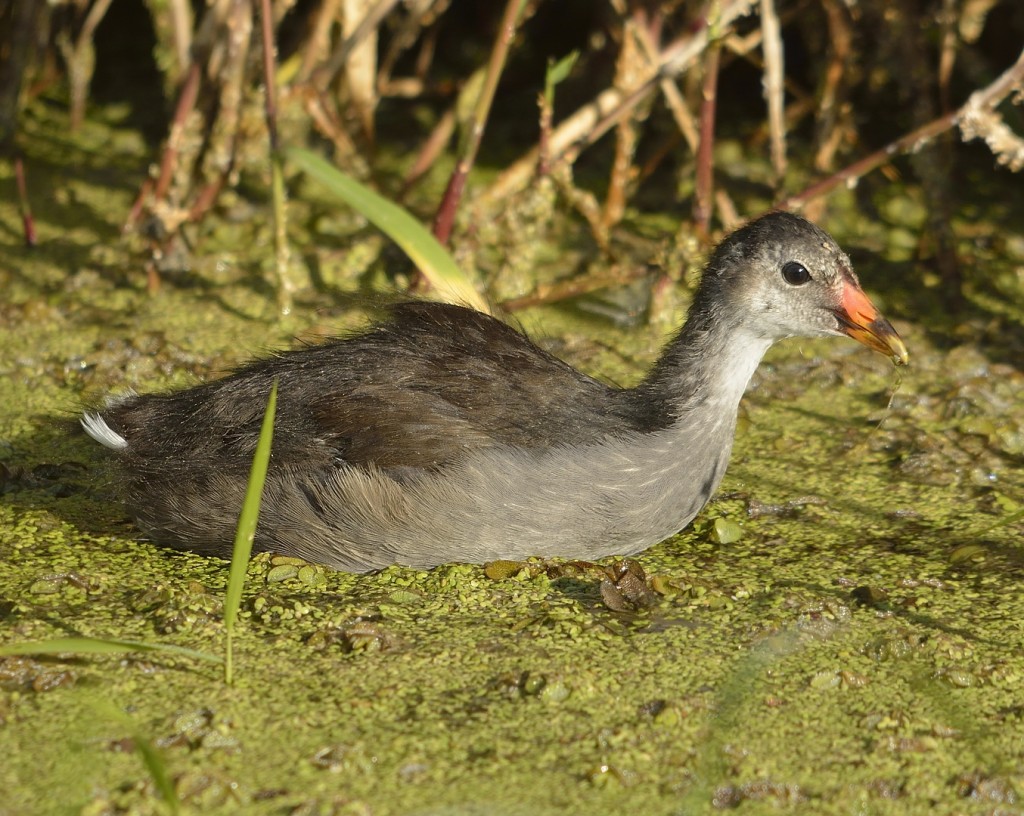
This half-grown juvenile common gallinule was all by his lonesome. Perhaps the only surviving member of his brood.
About two miles in, the drive reaches the shore of Lake Apopka and a large, historic pump house remaining from the agricultural period. On a small, drying pond near the pump house, I found a black-necked stilt, solitary sandpiper, and least sandpiper feeding in the shallow water and muddy shoreline, directly front-lit by gorgeous early morning light. As I spent the next 20 minutes or so burning up my memory cards on these photogenic birds, my slight dudgeon lifted. This is what I had come for.
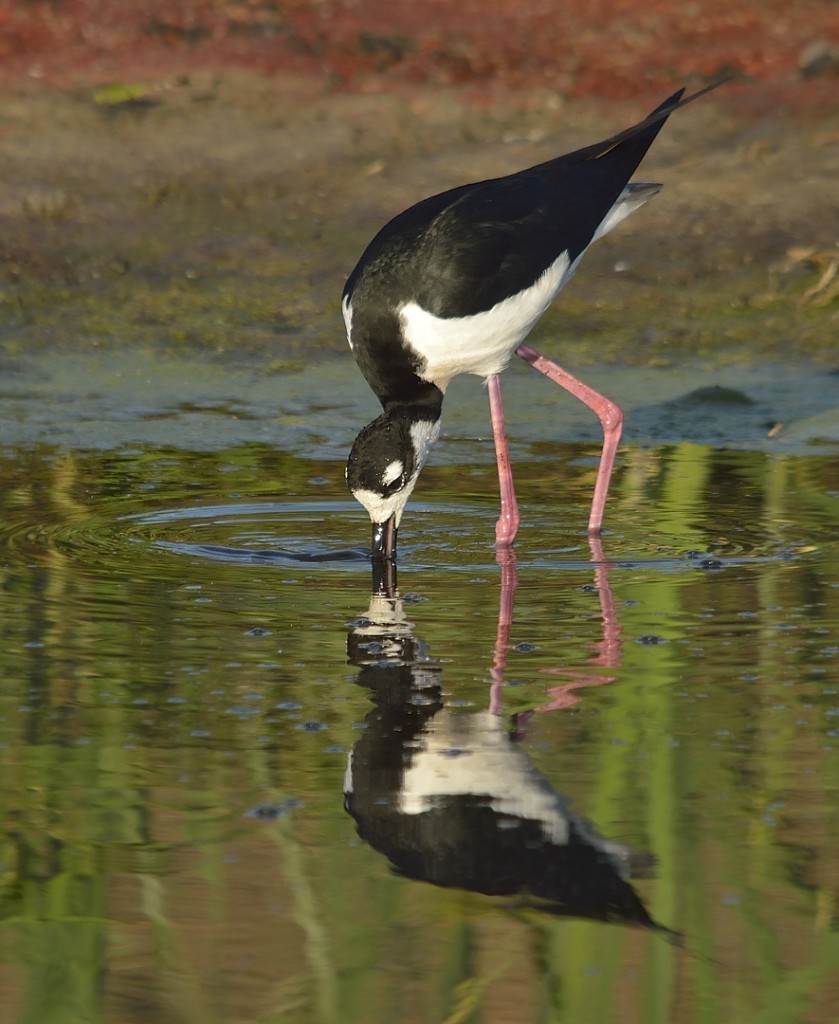
Black-necked stilts are very active foragers, frequently submerging their entire head searching for prey.
The rest of the morning followed suit. Though the birds were mostly breeding residents, it mattered not. Common gallinules, various egrets and herons, blackbirds, including a couple more small flocks of bobolinks, barn swallows (along with a few tree swallows in one flock), and other birds were everywhere. In one of the canals paralleling the drive, I was shocked by the huge numbers of big frogs half-submerged in duckweed and Salvinia, occasionally making short leaps to capture prey. Both bullfrogs and pig frogs were calling, which was somewhat surprising to me. I had always thought of those two species as ecological equivalents that didn’t normally co-occur. I don’t know where I picked up that bit of dubious knowledge, but clearly it doesn’t apply to the big Lithobates (could it be true that this horrendous genus is about to be decommissioned and the members of this genus placed back into Rana, where they belong? Joy.) frogs of the restoration area.
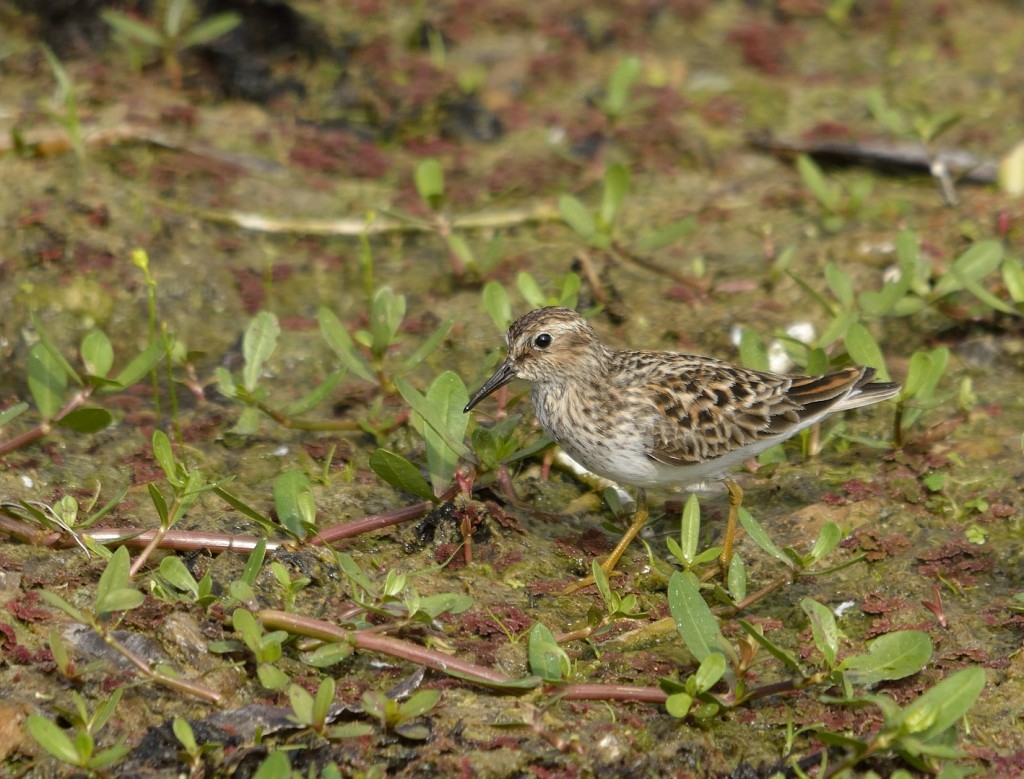
While shorebirds weren’t particularly diverse, and I only saw a few individuals of any species, it was still nice to see killdeer, stilts, spotted and solitary sandpipers, and several of these tiny little least sandpipers.
With all of those frogs, I figured there must be tons of snakes to prey on them, but I saw no water snakes or other aquatic serpents. A couple of black racers crossing the road were the only snakes I saw on this morning, but I’ve got to think the frog-eating aquatic snakes are there somewhere. Another time.
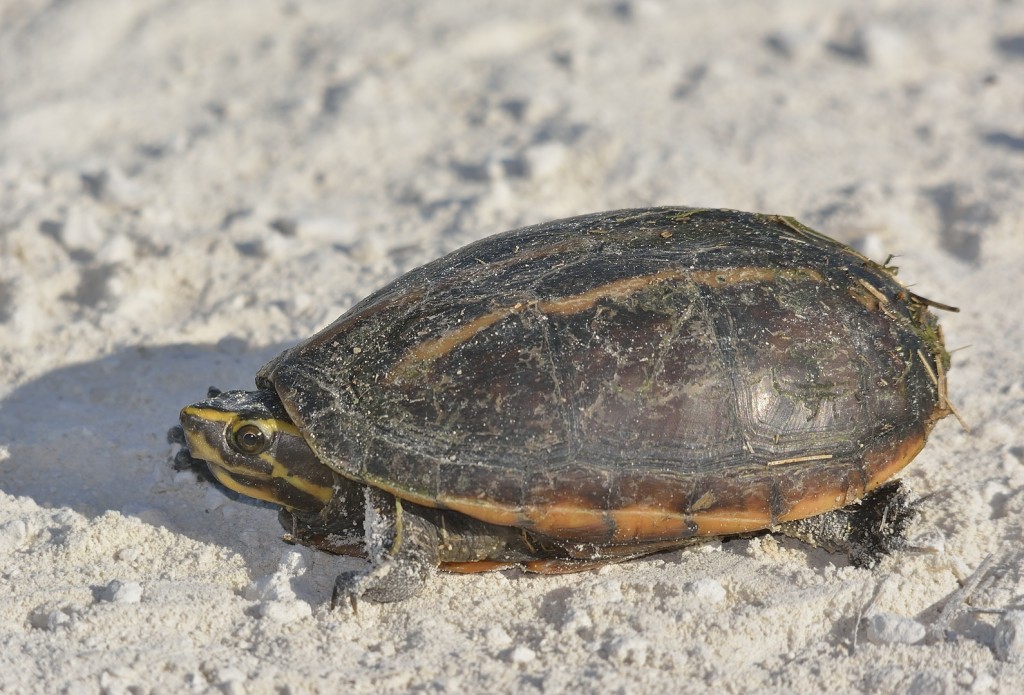
Besides the frogs, the other herps seen included lots of gators, a couple of black racers, and this cute little striped mud turtle (Kinosternon bauri) who looks like she just finished laying eggs.
And there certainly will be other times. I can barely wait until August, when the vanguard of fall migrants will begin to appear in numbers. I’m particularly excited about the potential for big numbers of yellow warblers, which I haven’t seen aside from an occasional lone individual or two since I stopped doing bird censuses at Emeralda Marsh Conservation Area. In August and September I sometimes found hundreds of yellow warblers a day in the willow thickets along the levee roads. There’s an abundance of similar habitat along the wildlife drive at Lake Apopka.
The best part of the day? In the 4 hours I spent there, I saw only one other car. I wish it would stay that way, but I know it won’t. The area is too amazing to remain a secret for long.
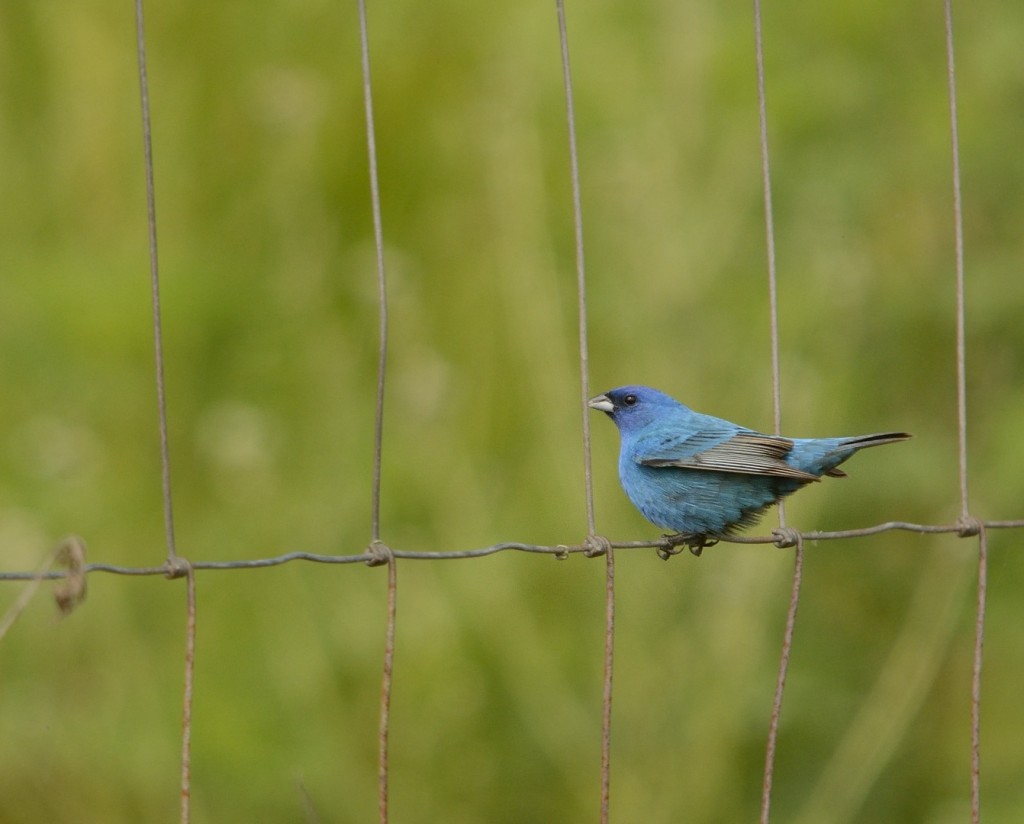
A quick trip to the parking lot of the North Shore trailhead at the end of Duda Rd. produced this lovely indigo bunting.
For more information about the North Shore Wildlife Drive, go to http://www.sjrwmd.com/recreationguide/lakeapopka/
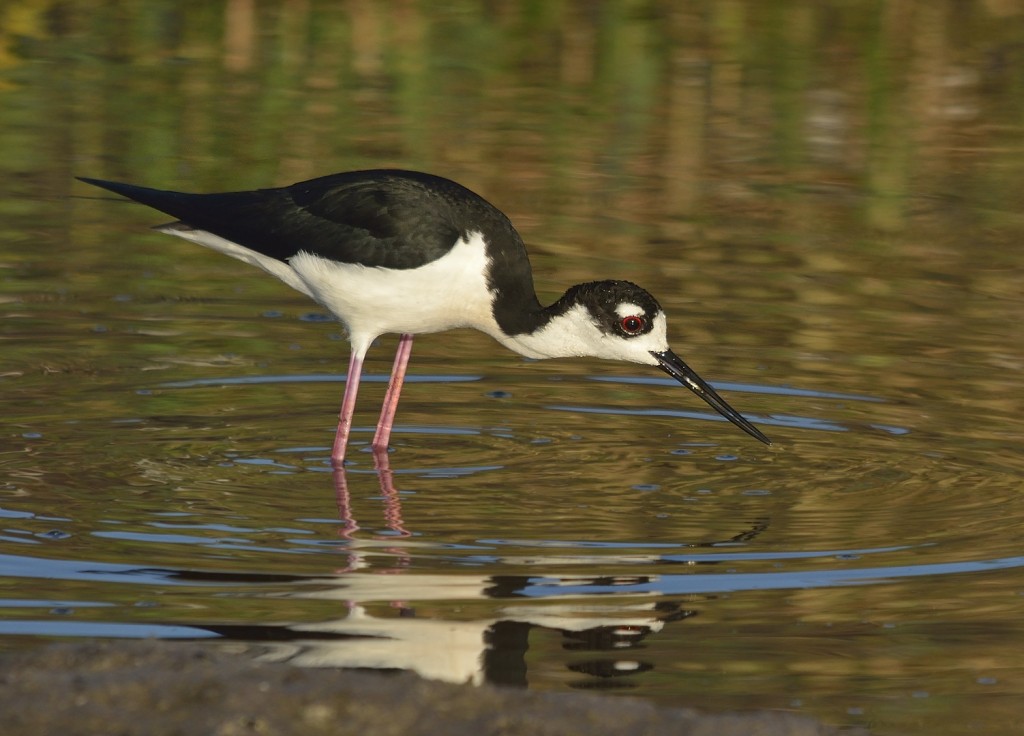
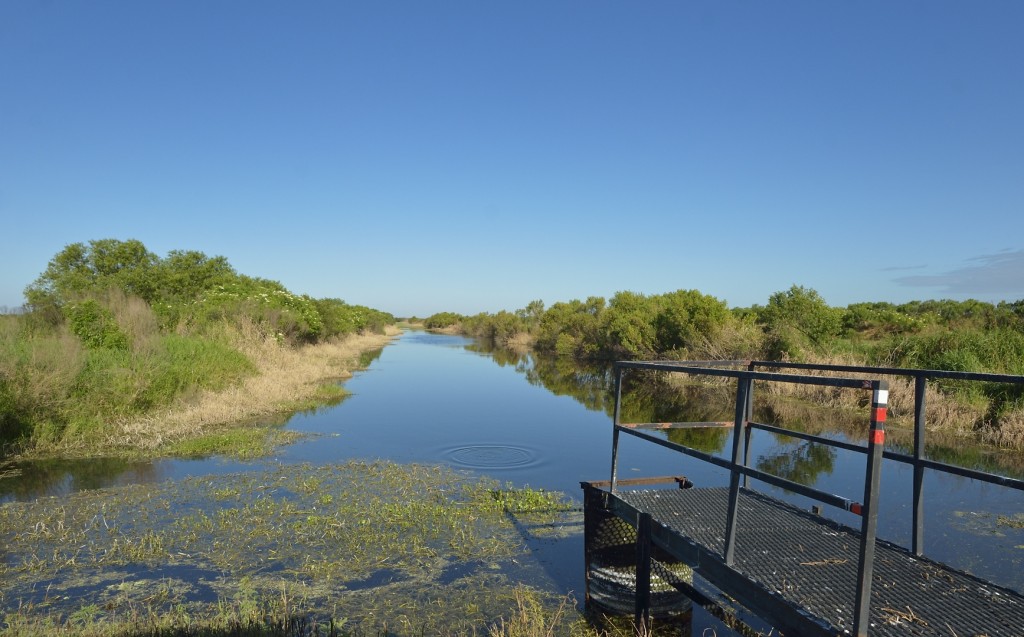
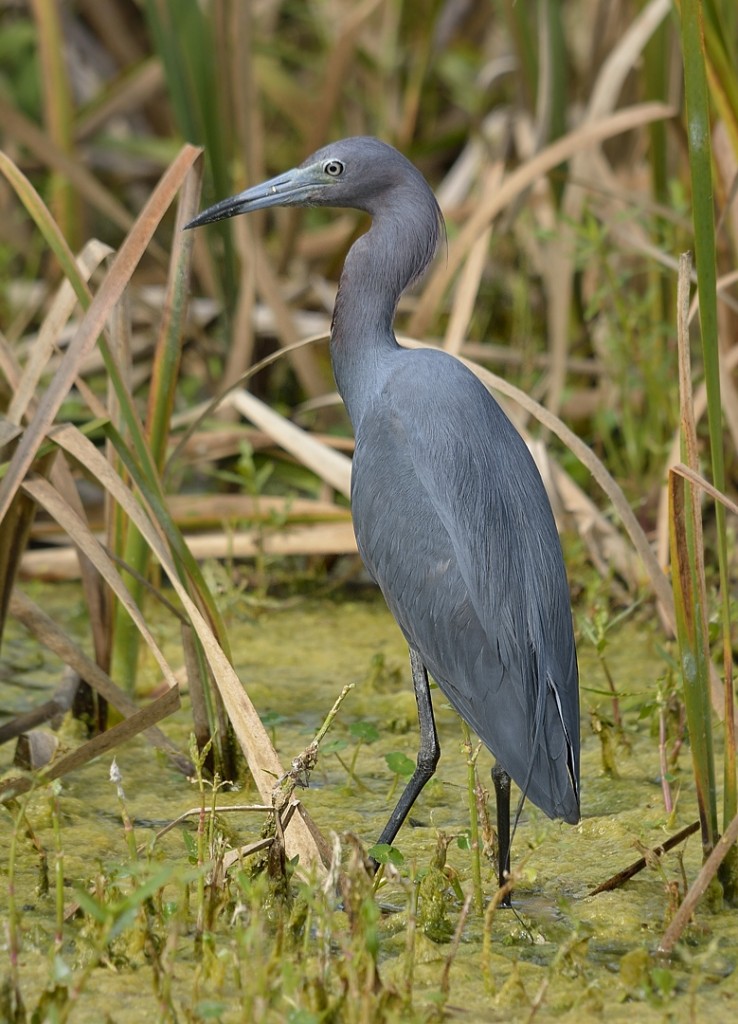
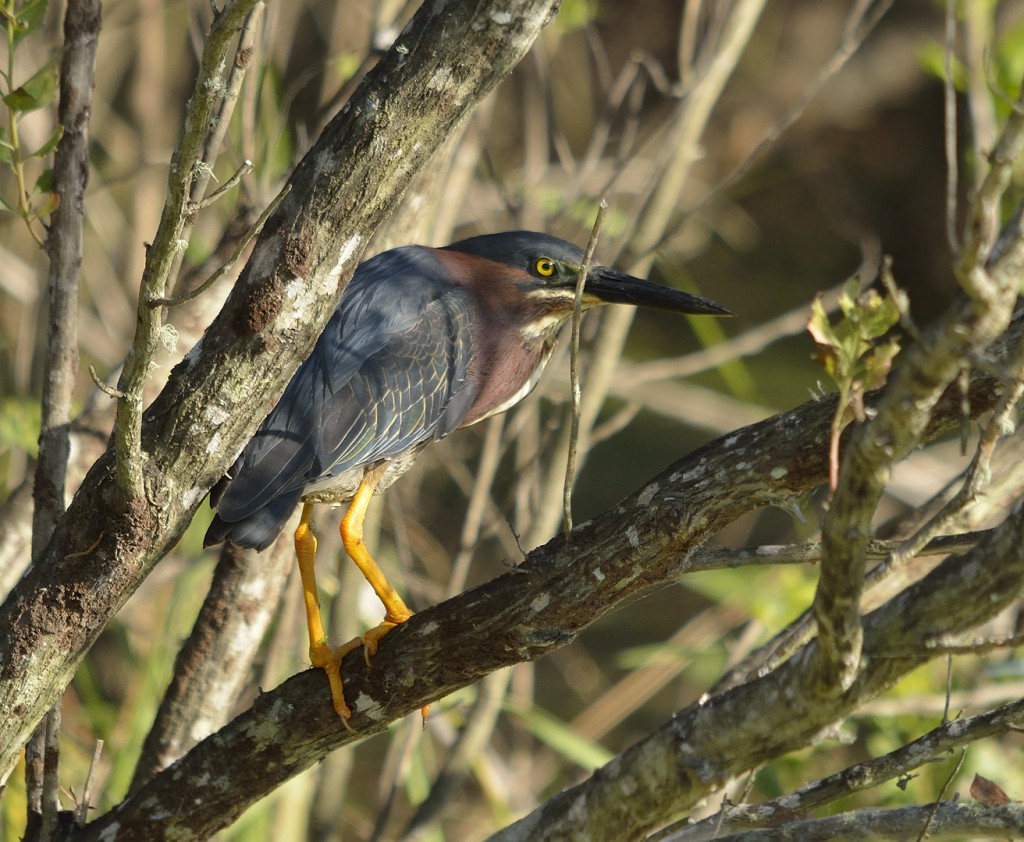
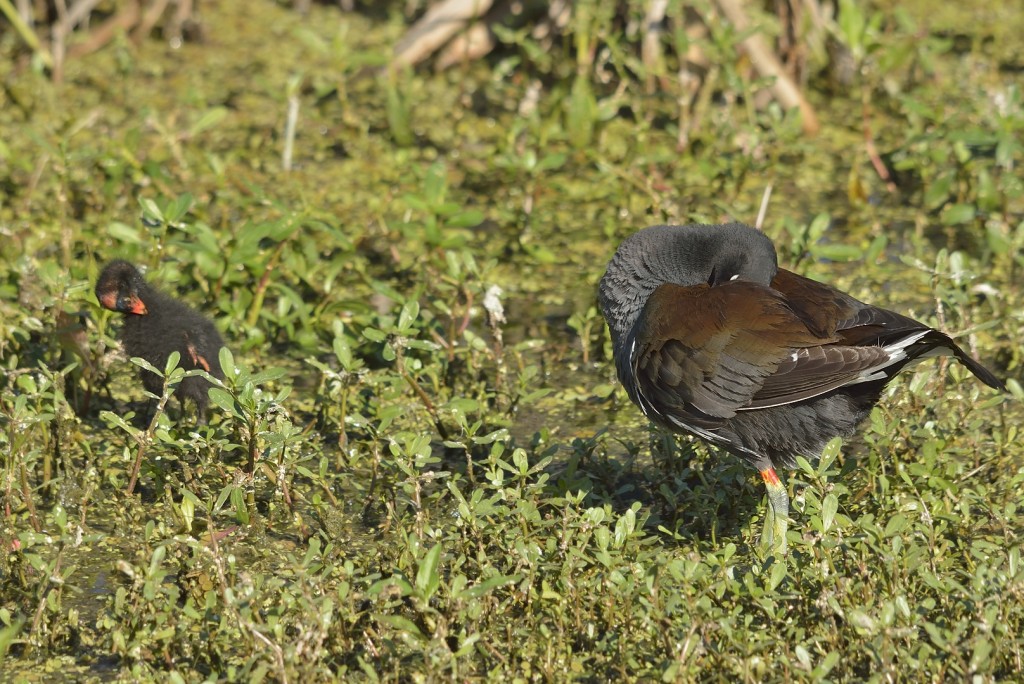
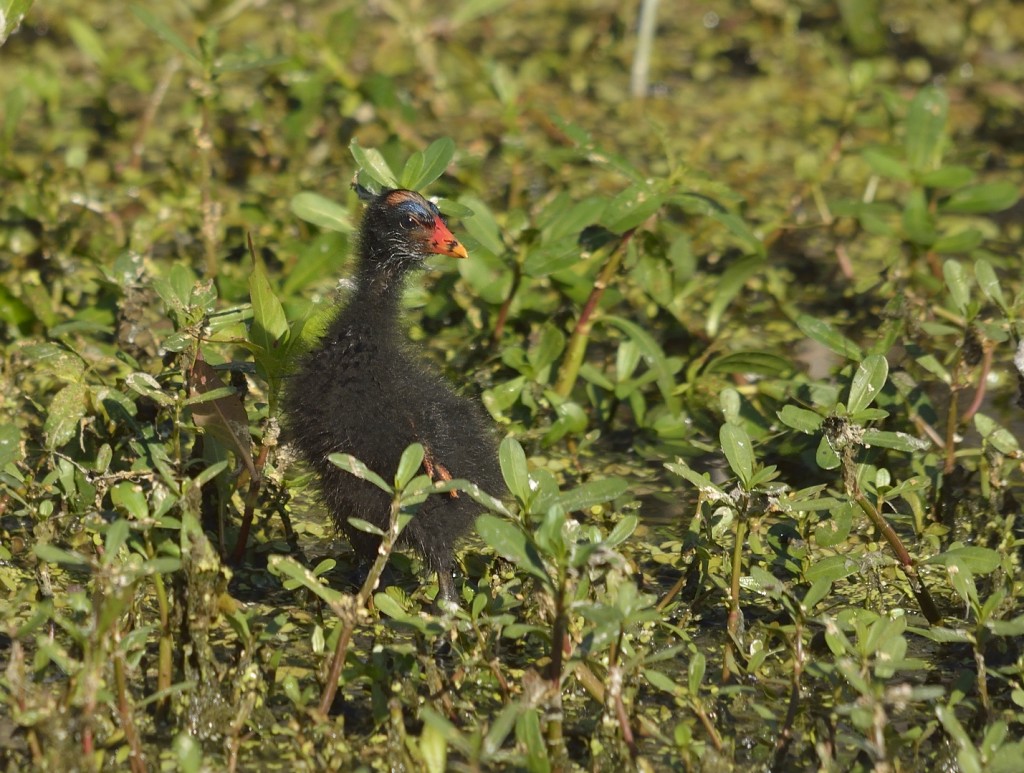
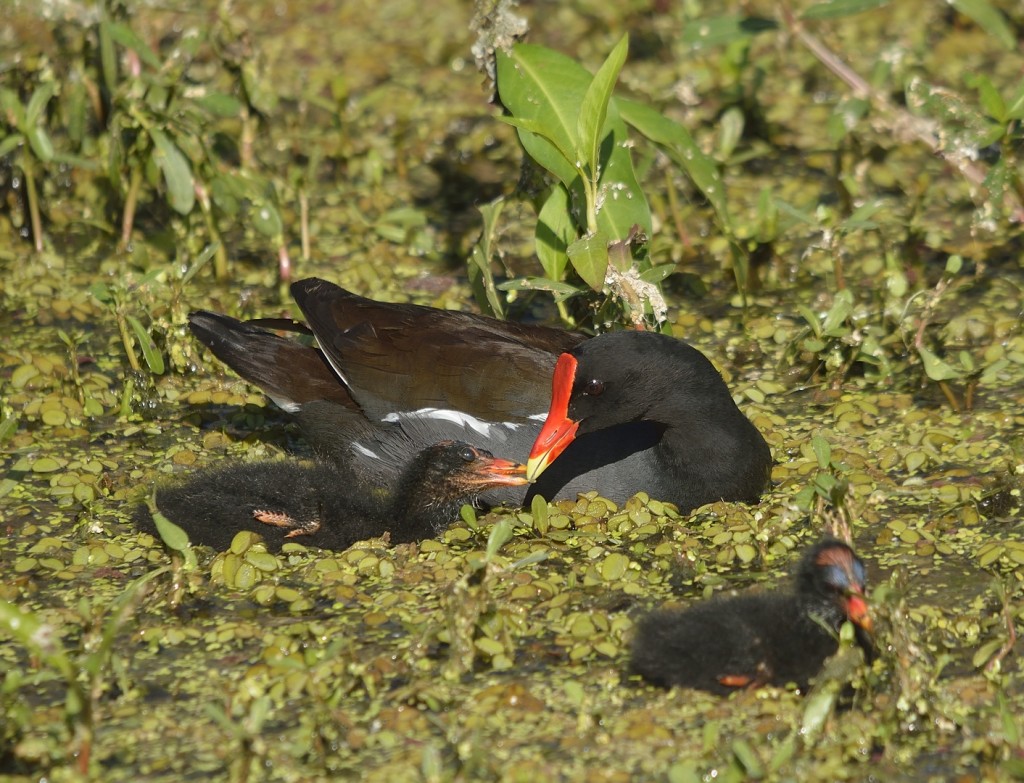
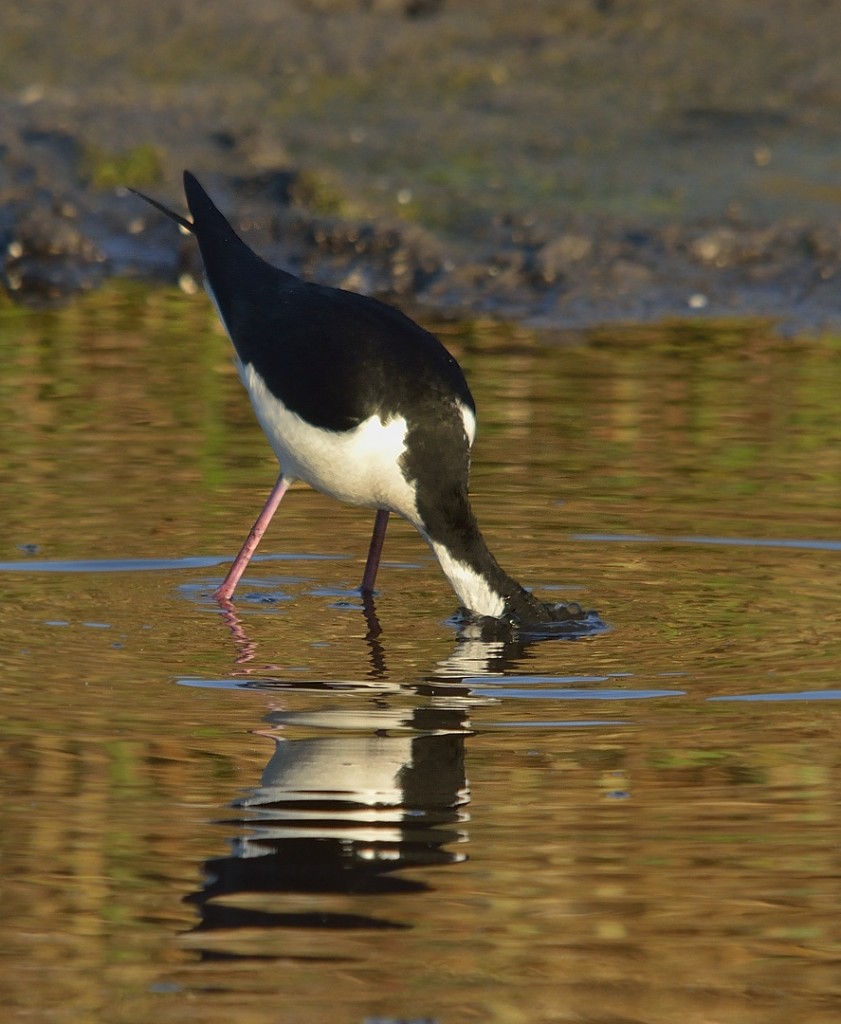
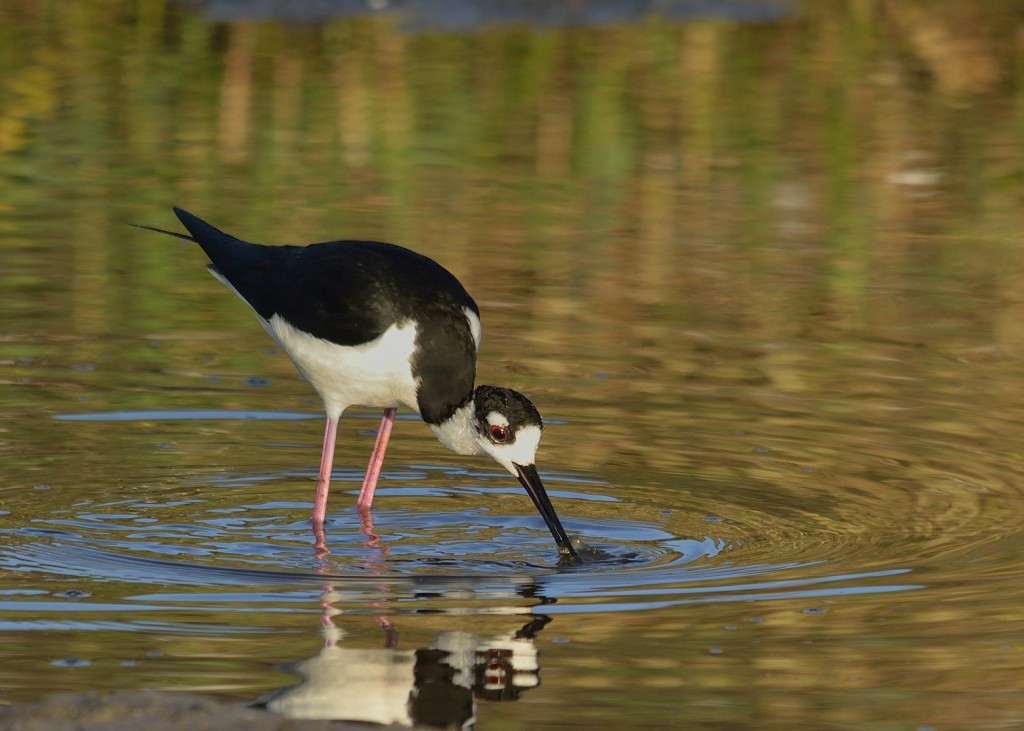
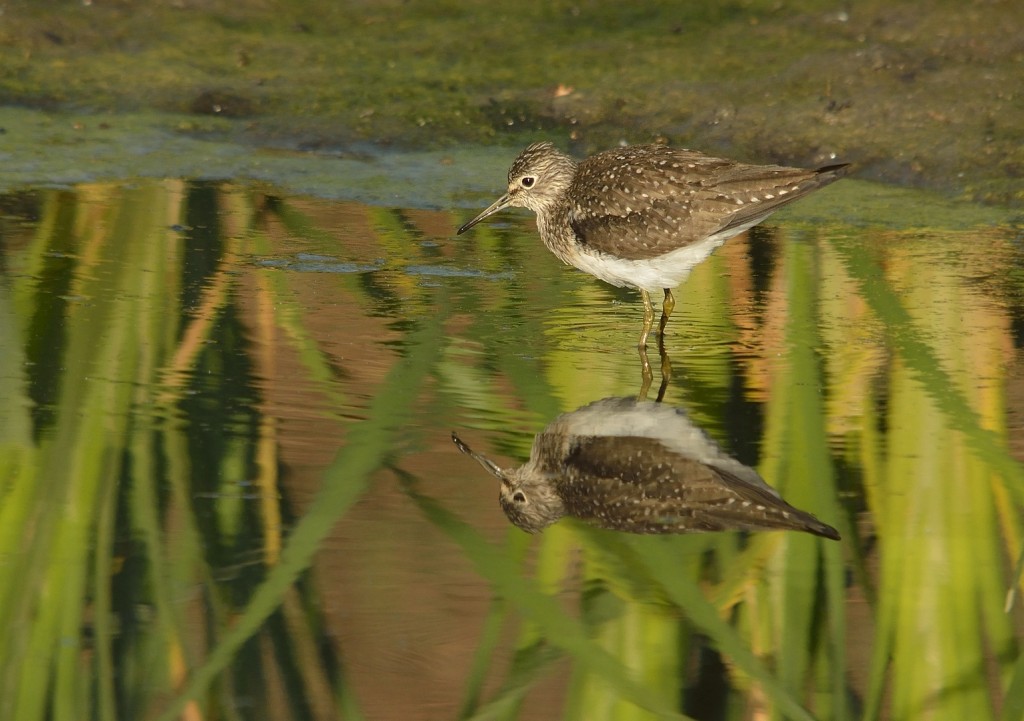
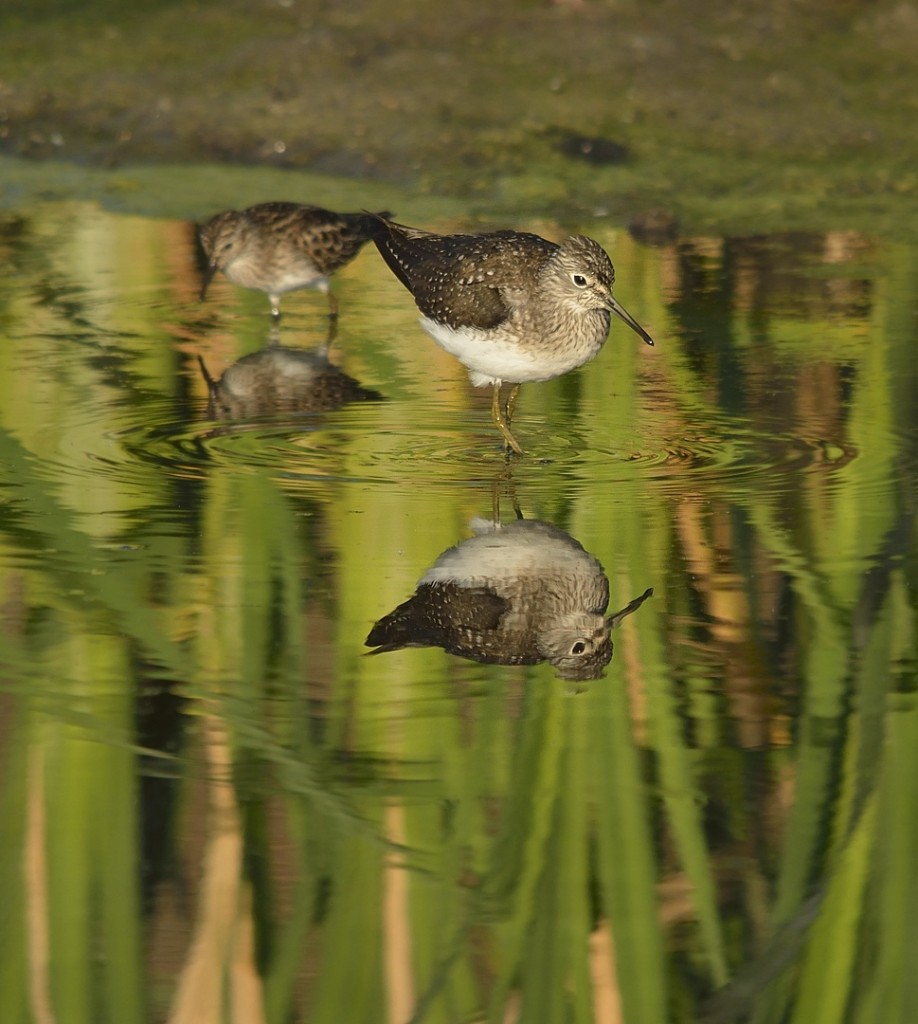
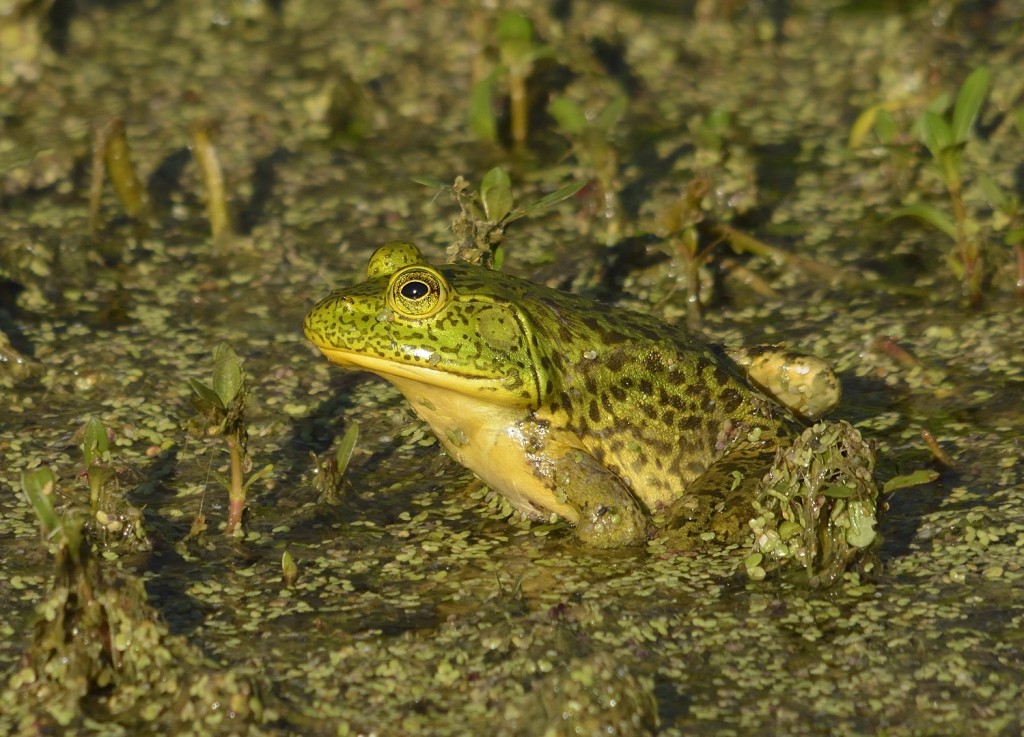
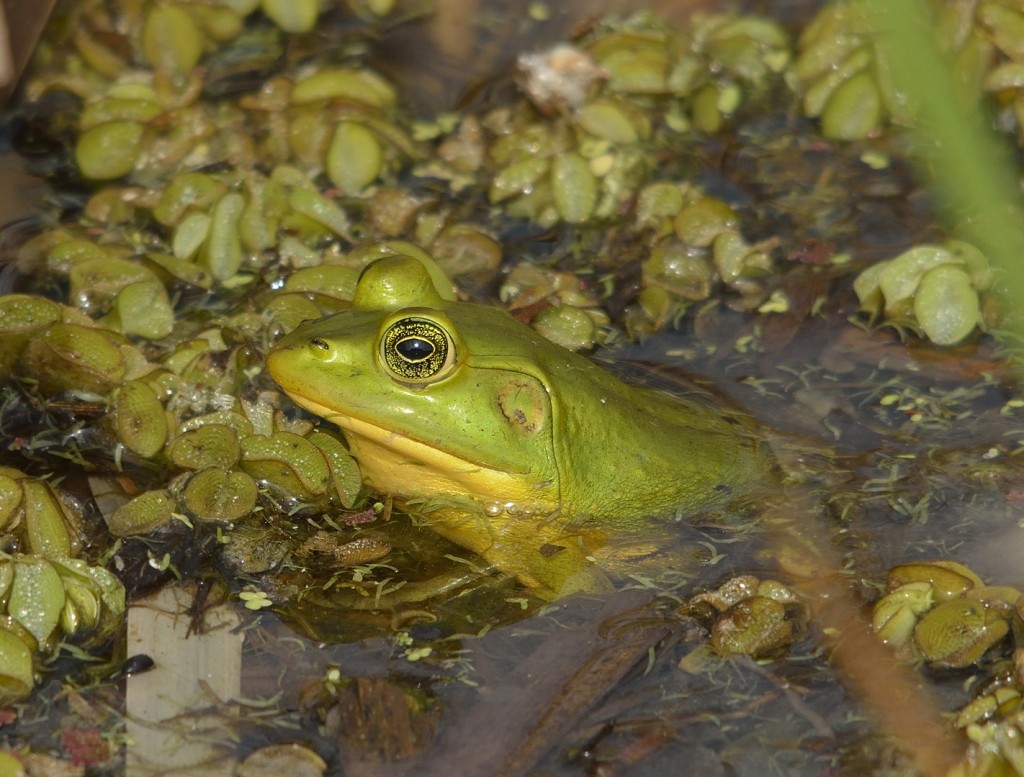
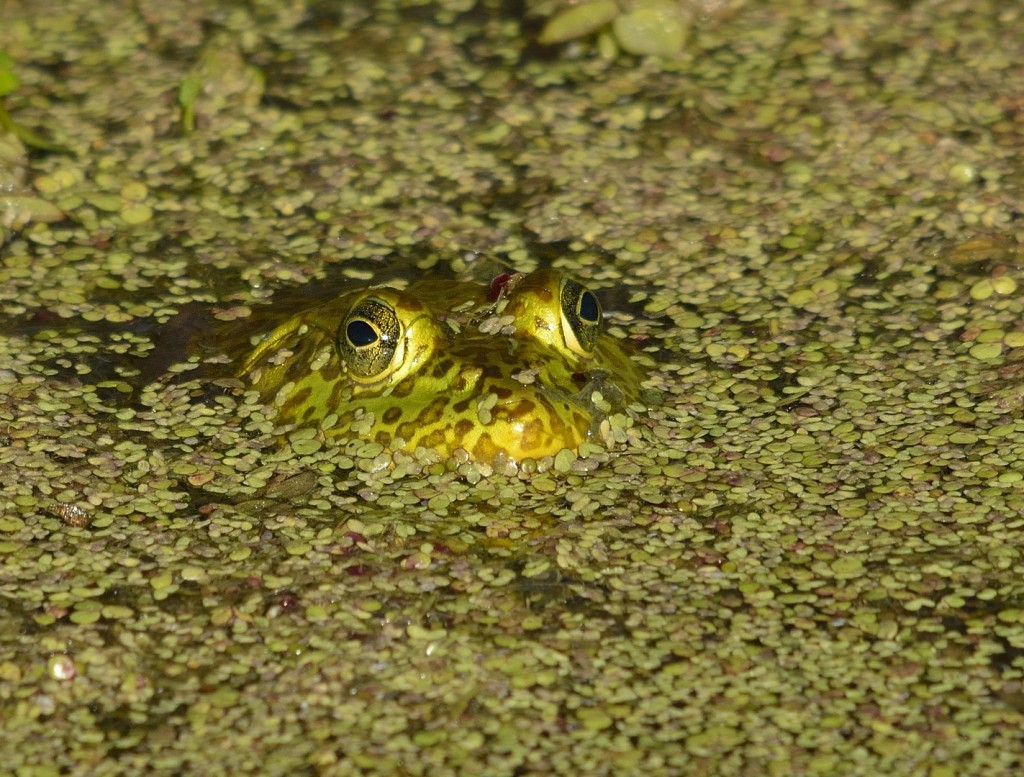
Outstanding photos!! And your enthusiasm is very obvious. It sure makes me want to go back there again.
Thanks, John
Tom Obrock and I made a visit (my first) to the Lake Apopka North Shore Restoration area on 11 DEC 2014, our final stop on a multi day tour of wildlife venues to the north normally visited annually or less. We had walked extensively for the Groove-billed Ani present at the time. Both Tom and I caught a glimpse of the beast, but no photo was had. We left a half hour (after near five hours of observations) before the bird exhibited itself extensively in the early afternoon. An Ash-throated Flycatcher (photographed) was a life bird for me at the restoration area that morning. We were informed of the soon to open North Shore wildlife drive with it a pleasant surprise to see the first report of the venue from you, Dr. Pete. The informant told of his belief that he was fortunate to be alive after breathing all the crop dust that he did observing the wildlife during the “agricultural period.”
I went looking for the ani back in February, Bob, but dipped. Great looks at a bobcat, though. Thanks for your thoughts.
Great to see the VN back in action, and back with a bang. Good story (with a hopefully happy ending) about a successful restoration, and, as usual, great photos (what handsome frogs!). Regarding the dearth of snakes, we’ve been hearing about a new fungal disease that is sweeping through snake populations, with the same devastating effect of the chythrid fungus on frogs. Some students found a snake locally (western NC) that showed a mouth infection. Any news on this from FL?
EE
Thanks, Gene. We had a big outbreak of fungal infection in our main pigmy population back in the late 90’s. It caused a number of deaths, but many snakes recovered. One of our students at the time, Joe Cheatwood, did his master’s thesis on it at UF and identified several species of fungi involved. It was pretty ugly in some cases; lesions all over the body, stomatitis that prevented some snakes from opening their mouth, grossly swollen heads and eyes. The population eventually recovered though.
Thank you for a terrific report! We’ve been anticipating the opening and will try to visit this weekend.
Like Bob, we were skunked on our Ani hunt in January, but had a nice consolation prize of a Nashville Warbler.
My brother used to entertain me with tall tales of the ’80’s-era birding around that area and my hope is I can treat him to something similar this fall.